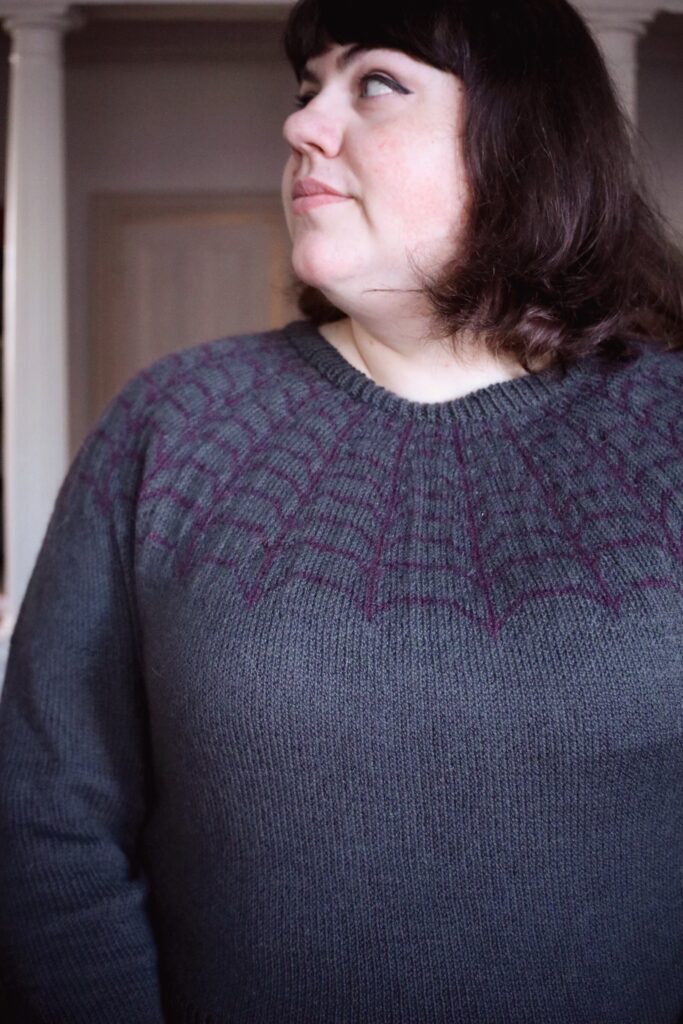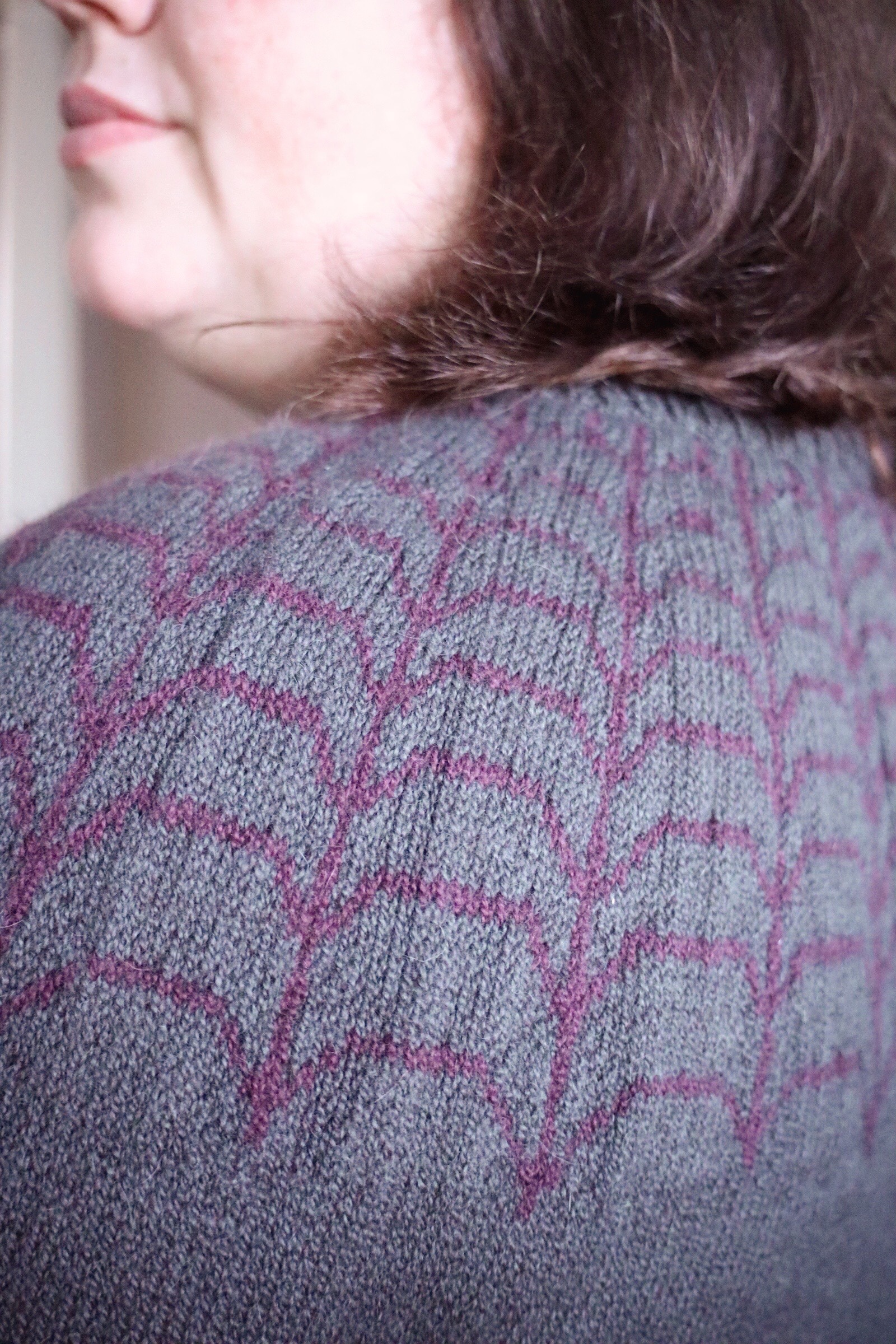I learned a new technique when knitting my Arachne sweater–the ladder back jacquard technique! This method is an alternative or counterpart to catching long floats when knitting colorwork patterns.
How to Work Ladder Back Jacquard
I knit two-handed colorwork, and I purl in what I think is called combination style with my left hand. I hold my contrast color yarn in my left hand and it hangs out until it’s time to shine. Here’s a video of ladder back jacquard knitting that I filmed (it’s short). There’s no sound, do not adjust your volume buttons.
What is ladder back jacquard?
The term “jacquard” comes from weaving. It describes a technique of creating a double-sided pattern by moving a strand in one color to the front or the back. If you’ve ever seen a pattern that uses double-knitting (I have a scarf in progress that does this but I don’t think I’ve shared any photos here), it’s similar in principle.
Why learn ladder back jacquard for colorwork?
For many, many colorwork patterns, you can get by just fine with catching floats every five or so stitches. But when knitting the Arachne sweater, I found that I had trouble keeping the floats loose enough to not pucker the fabric. In the knit-along group for the sweater, one of the other knitters mentioned ladder back jacquard as a way to give the yarn some extra room to float along the back. So I gave it a try and really liked how it worked with this sweater!
In most instances, where the colorwork motifs are closer together, I would use my regular catching technique. However, I’m happy to have another tool in my toolbox to use!

More info on working the ladder back jacquard technique
If you want a very thorough video about this technique, this is the video that was shared in the knit-along group. The woman who posted it (sparkylab) mentioned that the technique starts about fifteen minutes in.
For my sweater, I worked the beginning rows of the colorwork chart as I normally would. Once the length between contrast color stitches got to be a bit unwieldy, I worked to the middle of the section. I brought my main color to the front of the work. With my left needle, picked up the float of the contrast color. Then I worked a “make 1” with the contrast color. This forces the new stitch toward the back, which is what we want.
I repeated that in every section, so in essence, I cast on many more stitches. If the idea of many stitches on your needles is intimidating, this may not be the technique for you, but I encourage you to give it a try. I found that it didn’t really slow me down all that much and much prefer the finished fabric.
When you come to that extra contrast color stitch on subsequent rows, the biggest thing to remember is to move the main color yarn to the front. This is similar to working double-knitting patterns.
When I get to the extra CC stitch, the main yarn, held in my right hand, moves to the front of the work. I purl the extra stitch with the contrast color. Then I move the main yarn to the back of the work. That’s it!
On the row following the end of the colorwork section, the contrast color is no longer being worked. I knit to the extra stitch. Then I knit together the extra stitch (in contrast color) and the stitch to the left. This reduced the stitch count to what it was supposed to be and secured my floats.
Would you try this technique on a colorwork sweater? What’s your favorite way to manage long floats?


Well, this just blew my mind. I’m going to have to try this on my next colorwork project!